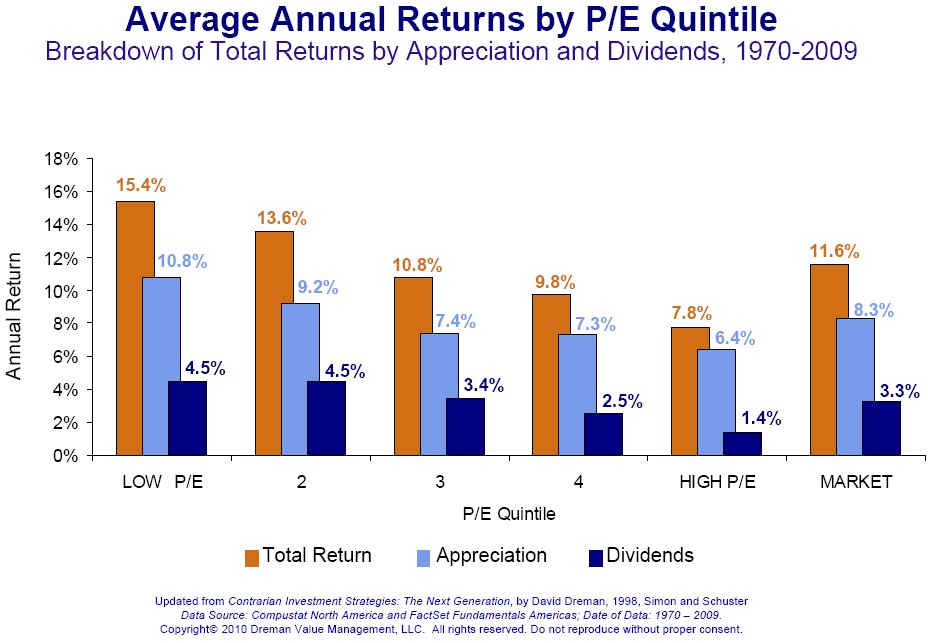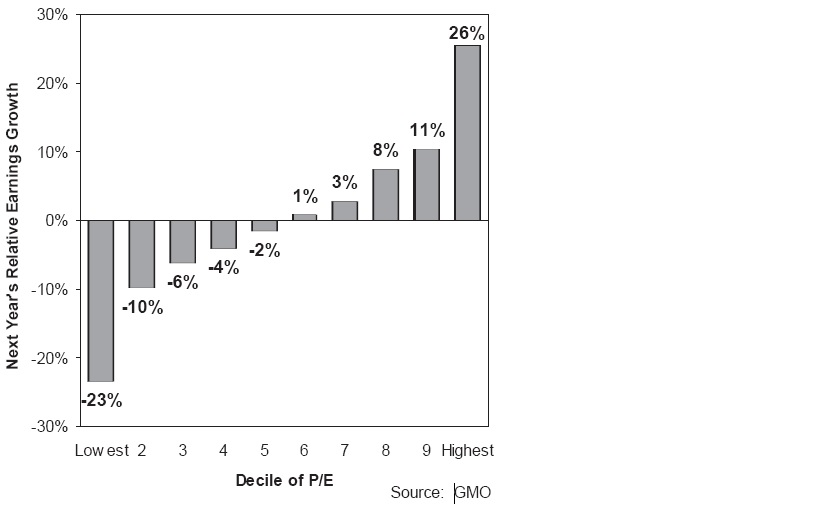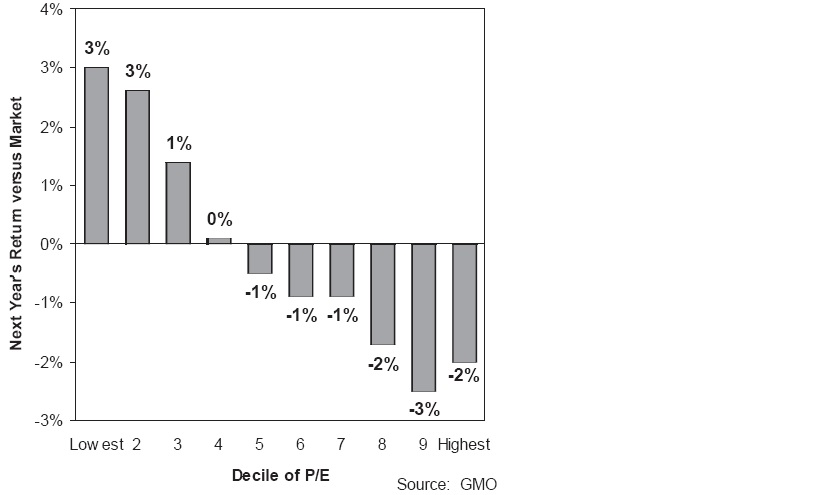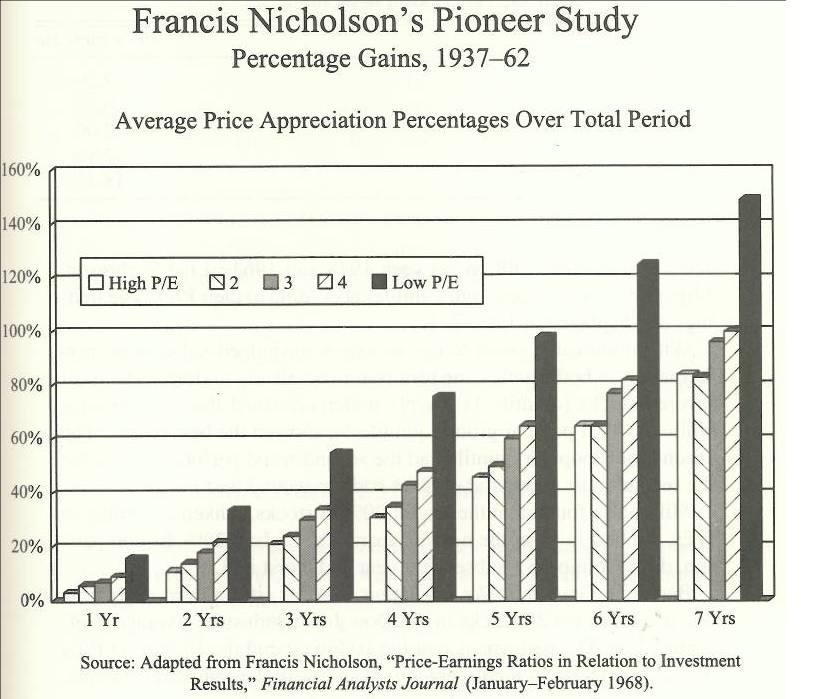Dear Fellow Investors:
Valuation is the topic that will begin a month-long series we’re calling, “The Road to Omaha.” In the next five weeks as we build to the Berkshire Hathaway annual shareholder meeting, we will present a picture of Mr. Warren Buffett and his investments through the Smead Capital Management lens. There is one central fact on which Warren Buffett, efficient market theorists, and Smead Capital Management agree—valuation matters dearly.
In this first installment , we will begin by looking at the academic evidence that proves the importance of valuation time and time again. Secondly, we will examine how psychology plays into an investment discipline based on valuation. We will finish by giving examples of past investments by Warren Buffett and highlighting how valuation played into Mr. Buffett’s hand.
Academic research has shown repeatedly that cheap stocks outperform the stock market over time. Eugene Fama’s work on efficient markets at the University of Chicago focused on low price-to-book value (P/B). He and his partner in research, Kenneth French, found that if you broke the S&P 500 Index up into five quintiles of 100 stocks and grouped them by P/B from lowest to highest, that the lowest P/B group consistently outperformed the index and the other four quintiles. Others like Bauman, Conover, and Miller, extended the analysis to include price-to-earnings (P/E), price-to-sales (P/S) and price-to-dividends (P/D). They also analyzed foreign securities. David Dreman added to the evidence with his 30-year study based on PE quintiles. All three of these major studies reexamined the quintiles annually. All have shown clearly that buying the cheapest stocks at the beginning of each year has been a winning long-term formula and has spawned exchange-traded funds (ETFs) working off of these premises.

The two charts below show why cheap stocks do so well. The first one shows that research analysts are very good at figuring out which companies will have the best earnings growth.

The second chart shows that low expectations cause the cheapest stocks to outperform the market over the next 12 months and way outperform those stocks which had higher expectations/popularity.

For Warren Buffett’s and our purposes, the 25-year study conducted by Francis Nicholson from 1937-1962 is the most exciting. His work shows that buying what is cheap not only rewards you annually, but that in a static portfolio the gift of cheapness keeps on giving. Notice in the chart below, that holding the cheapest stocks causes added alpha seven years into the time period.

The psychology of buying cheap stocks is critical to the discipline. Have you ever looked at the list of the 100 lowest P/E or P/B stocks in the S&P 500 index? It’s a list that only a mother could love. We love John Templeton’s concept of buying “at the point of maximum pessimism”. He said, “If you wait to see the light at the end of the tunnel, you have already missed the bottom”
To those investors who agree that valuation matters dearly, we believe there are two choices. The first choice is to buy all 100 of the lowest quintile stocks. The other choice is to have some qualitative screens to find individual securities off of this undistinguished list. Almost every company on the list has warts and/or some newsworthy problem either from exterior circumstances or through self-affliction.
Some of Buffett’s biggest successes have come off of these lists of cheapest stocks. In 1963-64, American Express got swindled by standing behind contracts to deliver salad oil out of their warehouses in New York. The stock got crushed and was driven into the lowest P/E category of the S&P 500. This was a self-inflicted wound, but Buffett analyzed their main businesses of traveler’s checks and American Express cards and could see a way past the current warts and debacle.
As it turned out, the tanks contained mostly water, with salad oil floating on top for disguise. Shares of AmEx dropped 50%. Buffett pounced, and multiplied his investment five-fold in five years. –Fortune/Shawn Tully, 8/29/2011
Buffett had been familiar with the Government Employees Insurance Company (GEICO) through his work for Ben Graham. Buffett realized the attractiveness of the model of selling insurance without having to pay big insurance agent brokerage commissions. The business had been poorly run prior to 1976, but Buffett could see how cheap it was when a better manager got involved. He started buying into the business. It was in the pile of cheapest stocks in the S&P 500 at the time.
The second crisis-drive opportunity came in 1976, when the stock of Geico collapsed to $2 a share from a previous high of $61. The once conservative insurer had lost its way by underpricing its policies in pursuit of reckless growth, and scrimping on reserves. Once again, Buffett reckoned that GEICO would thrive if its new management restored its low-cost, low-risk strategy. Berkshire Hathaway (BRKA) boosted its holdings as others fled, and by 1996 had accumulated 51% of its stock. That year, Berkshire purchased the remaining shares at $71 for $2.3 billion—35 times what he paid in the crisis, and a price that now looks like a terrific bargain. –Fortune/Shawn Tully, 8/29/2011
More recently, Buffett has snapped up shares of Wells Fargo from the scrap heap of the late 1980s and early 1990s savings and loan debacle. It was firmly in the bottom 100 stocks in the P/B category of the S&P 500 index. The warts were obvious and the pessimism in 1980s and early 1990s was thick.
Our purchases of Wells Fargo in 1990 were helped by a chaotic market in bank stocks. The disarray was appropriate: Month by month the foolish loan decisions of once well-regarded banks were put on public display. As one huge loss after another was unveiled – often on the heels of managerial assurances that all was well – investors understandably concluded that no bank’s numbers were to be trusted. Aided by their flight from bank stocks, we purchased our 10% interest in Wells Fargo for $290 million, less than five times after-tax earnings, and less than three times pre-tax earnings.
…fears of a California real estate disaster similar to that experienced in New England caused the price of Wells Fargo stock to fall almost 50% within a few months during 1990. Even though we had bought some shares at the prices prevailing before the fall, we welcomed the decline because it allowed us to pick up many more shares at the new, panic prices. –Berkshire Hathaway Shareholder Letter 1990
The key to all of this, and the thing we believe we hold in common with Mr. Buffett at Smead Capital Management, is the ability to remember and know the virtue of businesses whose stocks fall into the cheapest camp or quintile. In our case, we use our eight proprietary criteria for stock selection and over three decades of experience. Buffett has over six decades of experience; he can remember when these stocks were popular and why they were popular. In our humble opinion, he more than anyone else in the market would know if their moat is damaged or improved by the difficult recent past. If it is in his “circle of competency”, he might have a vision of how the future will play out for the company. Lastly, he is willing to own companies for many years, letting the marketplace move them from—in the words of Buffett’s mentor, Benjamin Graham—a voting machine to “a weighing machine”.
Best Wishes,
William Smead
The information contained in this missive represents SCM’s opinions, and should not be construed as personalized or individualized investment advice. Past performance is no guarantee of future results. It should not be assumed that investing in any securities mentioned above will or will not be profitable. A list of all recommendations made by Smead Capital Management within the past twelve month period is available upon request.
This Missive and others are available at smeadcap.com
